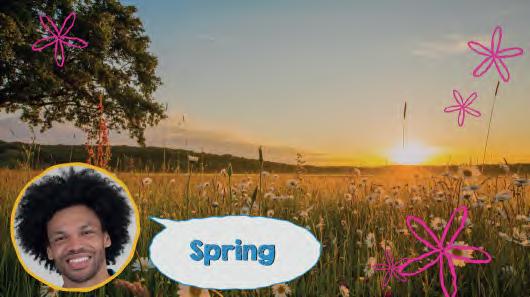
2 minute read
Teaching with video
Video is a great tool for conveying information to young learners. A combination of images, movement, colors, sounds, music, and language supports learning at all levels. Students may watch the same videos many times and each time their perception of the material they watch is enhanced. Video plays a crucial role in Rise and Shine and is an engaging and interactive resource for students. Our World video
Rise and Shine includes six videos using real-life footage. These videos follow the unit topics and add a real-life documentary feel to the content of the unit. These videos are designed as a fl exible resource, to be used at multiple points in the unit. Each one can be used at the start of a unit of work along with the Big Picture to introduce the topic. It provides exposure to Vocabulary 1 and Grammar 1 receptively in context. The topic also links to the real-world global or local angle in the Grow stage and if time allows, it can be used in Lesson 6 to support the global citizenship theme. The video can also be used in the Lesson 8 Review to give students a chance to refl ect on how much more they understand of the video now that they are close to fi nishing the unit. Worksheets for Our World videos are available on the Pearson English Portal. Practical tips for using video
Advertisement
Watching the video allows students to see language learned in another context. It is likely that during the fi rst viewing students will not understand the entire text presented in the recording but they will get the meaning of the pictures, sounds, and the rhythm of the spoken language. They will remember some phrases, especially those which are repeated often. • Use the videos to review the material. Children have a good short-term memory and watching the same episodes again two months after they were fi rst shown will considerably improve their memorizing ability. • Watch the video with students from the beginning to the end. Encourage students to say the English words they remember from the recording. • Watch the video again, stopping the recording after each scene so that you can ask students questions about the things they see. • Listen to the video with the screen covered (blind listening) and ask students about what they heard to support listening skills development. • Watch the video with the sound muted (silent viewing) and ask students to name objects, describe the scenes, or imagine what is being said to review key language and support critical thinking skills.








